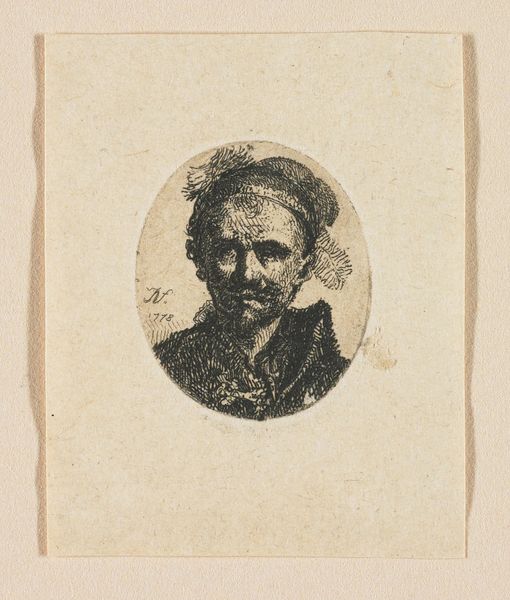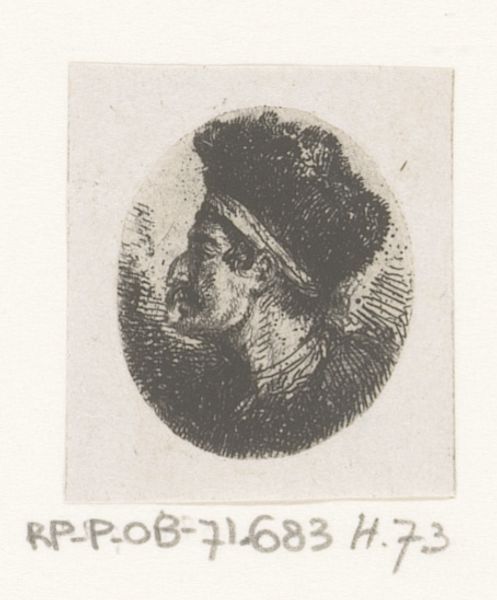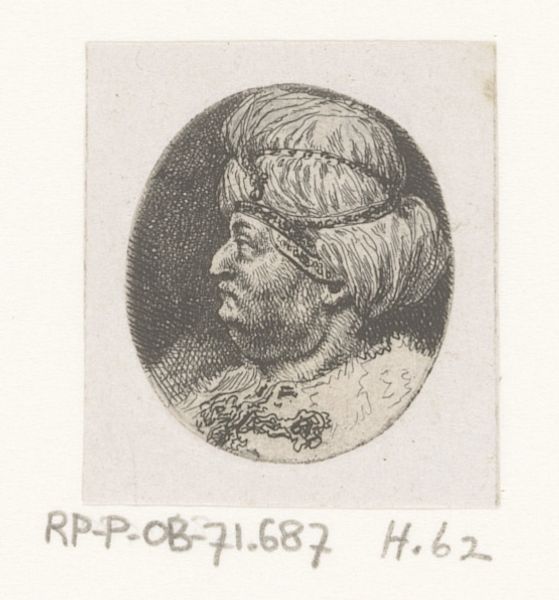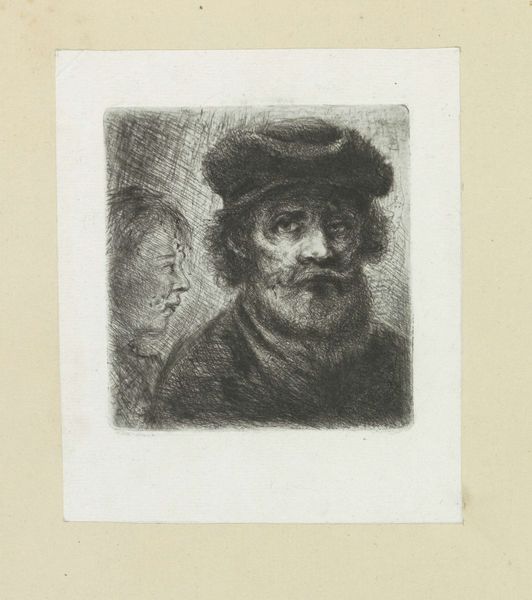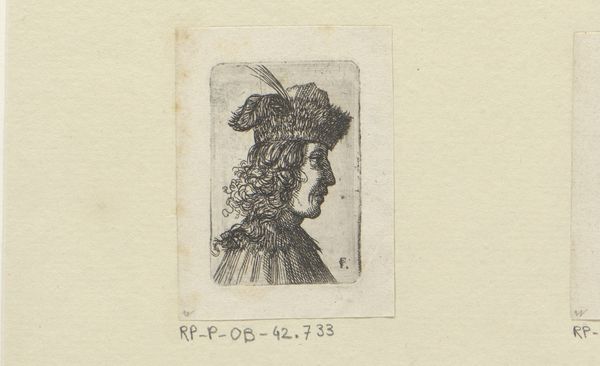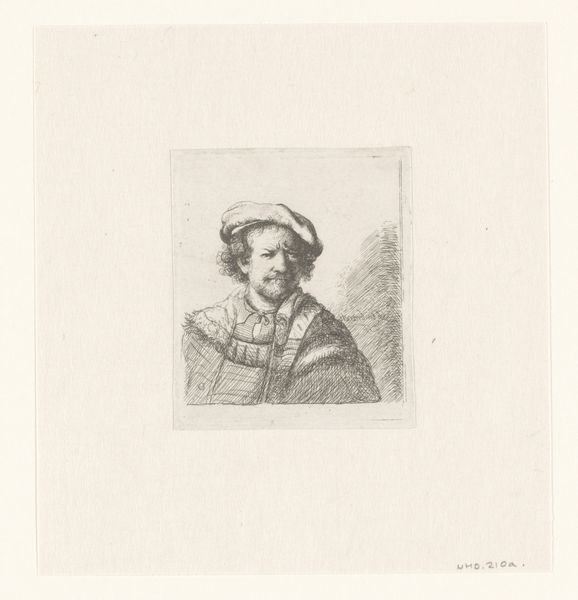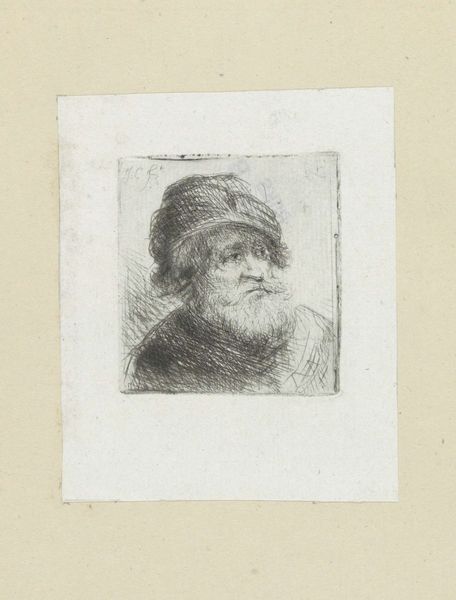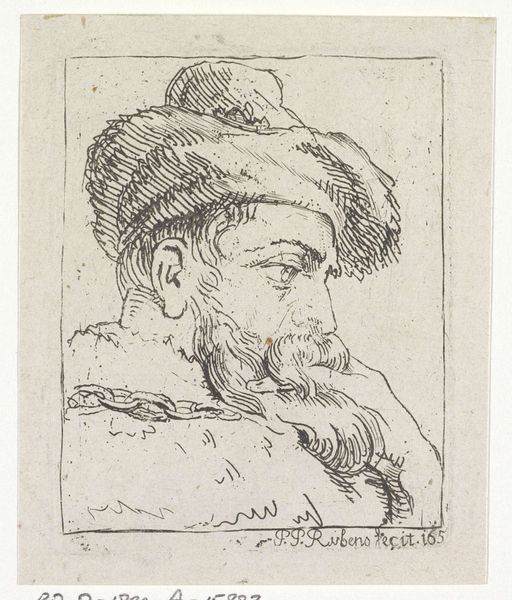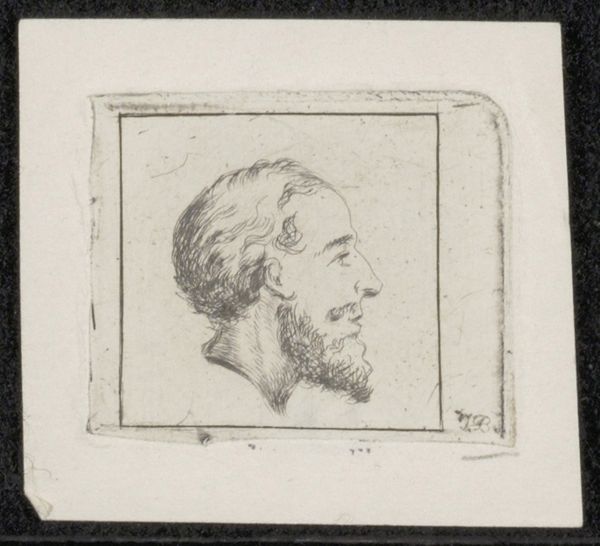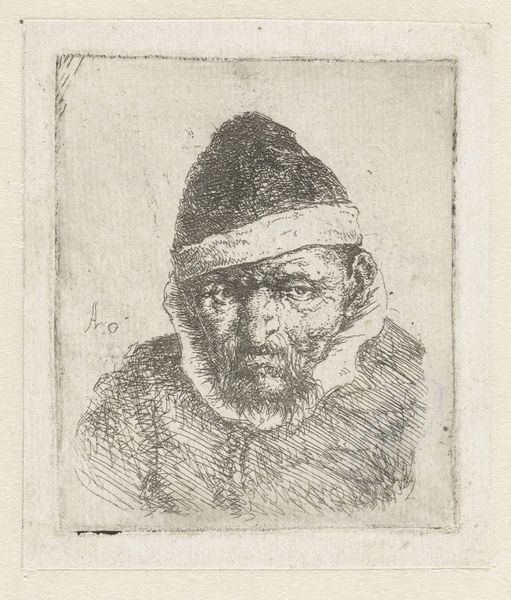
Dimensions: height 19 mm, width 18 mm
Copyright: Rijks Museum: Open Domain
Jean-Pierre Norblin de la Gourdaine etched this small portrait, “Head of a Man with Fur Cap and Feather,” in 1778. Note the man's striking fur cap, adorned with a feather. In the late 18th century, such a cap was more than mere protection against the cold; it was a symbol of status, a marker of identity. Consider how feathered headwear has appeared across different cultures and eras. From the elaborate headdresses of indigenous tribes, signifying spiritual connection and leadership, to the feathered helmets of ancient warriors, imbued with martial prowess. This motif evolves, yet persists. The feather itself is a potent symbol of lightness, flight, and aspiration. It echoes through history, appearing in religious art to signify divine messengers, like angels, or in allegorical depictions of hope and freedom. The choice to adorn oneself with feathers, therefore, taps into a collective memory, a primal desire to transcend the earthly, to assert one's identity, to take flight in the eyes of others. It is a powerful force, engaging us on a deep, subconscious level.
Comments
No comments
Be the first to comment and join the conversation on the ultimate creative platform.
